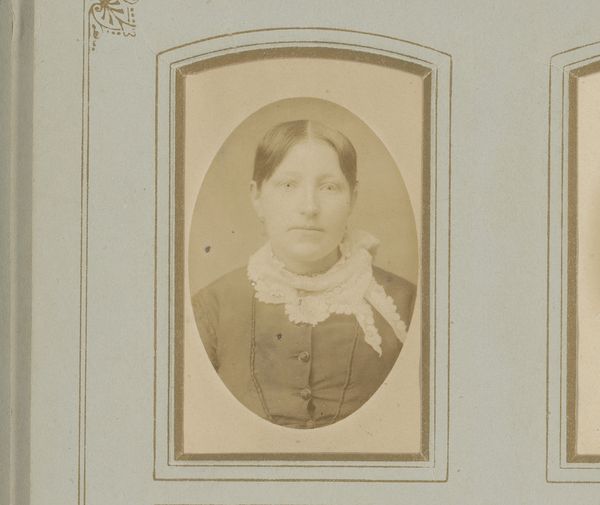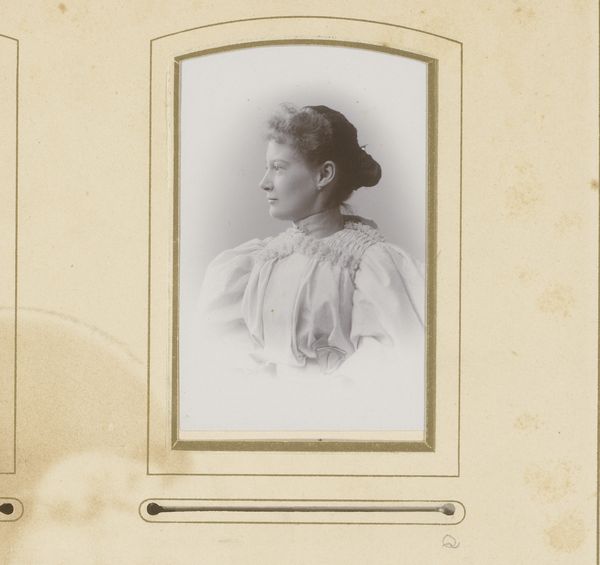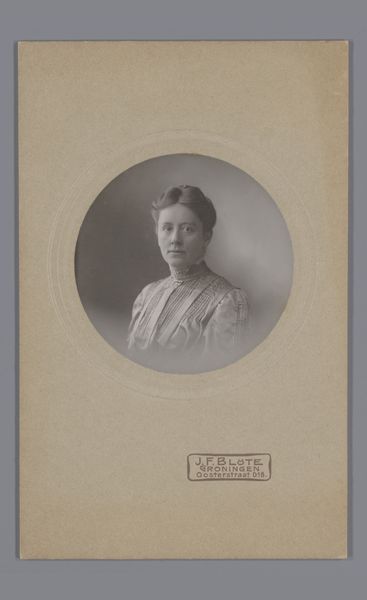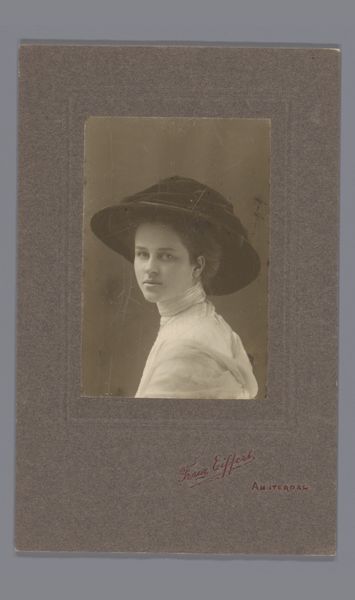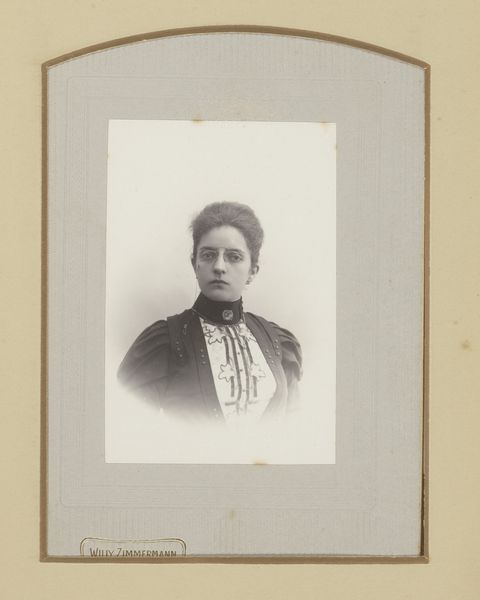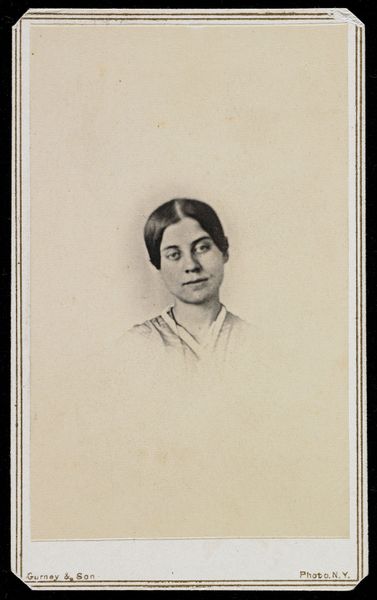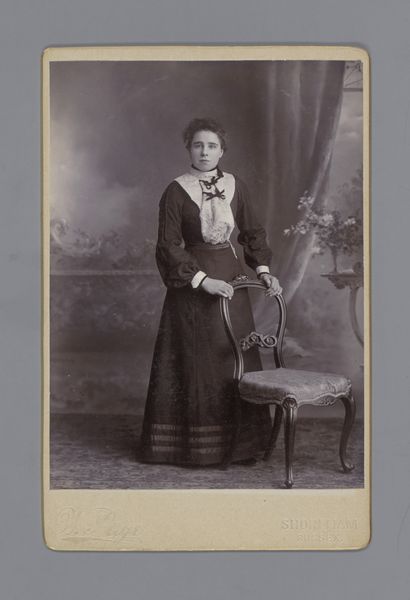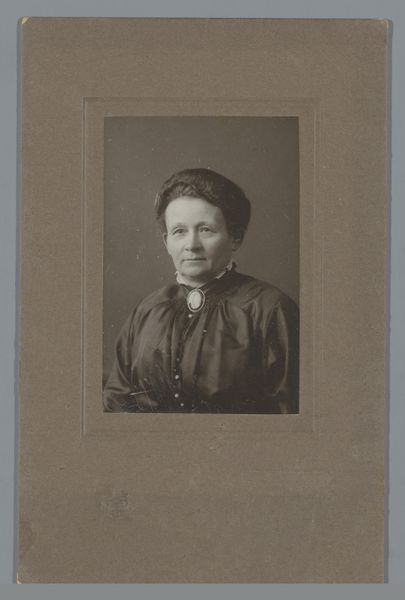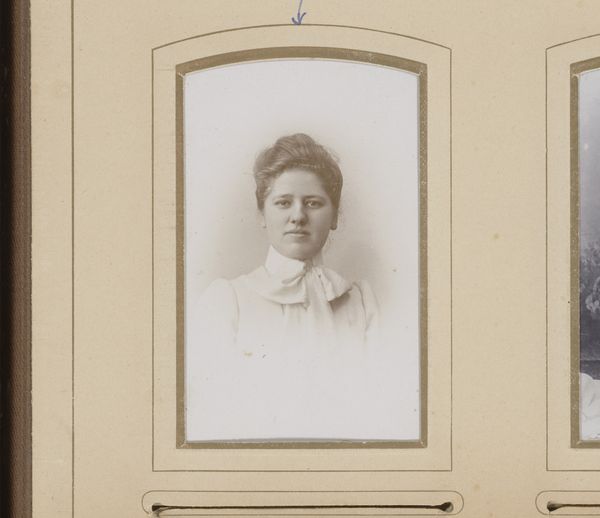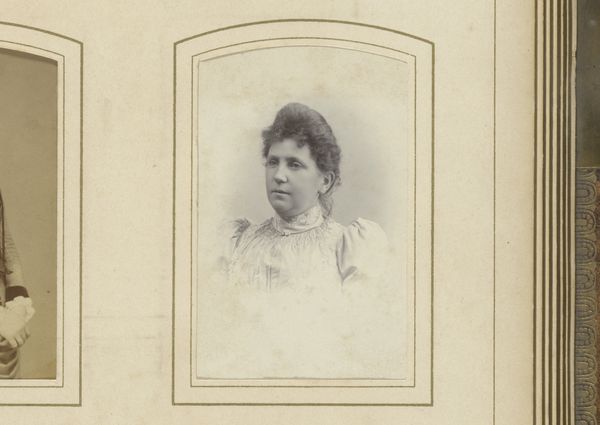
#
faded colour hue
#
photo of handprinted image
#
pale palette
#
pastel soft colours
#
muted colour palette
#
pale colours
#
light coloured
#
white palette
#
feminine colour palette
#
soft colour palette
Dimensions: height 89 mm, width 58 mm
Copyright: Rijks Museum: Open Domain
Editor: Here we have an image titled 'Portret van een onbekende vrouw' by Atelier de Jong, dating roughly between 1880 and 1920. The faded sepia tones lend a certain weight, and it strikes me how much the physical object itself – the print and its mount – contributes to the portrait. What are your initial thoughts? Curator: It's fascinating to consider the materiality here. This isn’t just a representation of a woman, but an artifact of photographic processes and studio practices of the late 19th and early 20th centuries. How does the specific type of paper and the printing technique used reflect the evolving technologies available to Atelier de Jong and impact their business model, as they transitioned between different aesthetic conventions? Editor: That's interesting. I hadn't considered the studio's position within a changing industry. Does the muted color palette also tie into those constraints of material access and technical expertise? Curator: Absolutely. The limited palette could be read as an aesthetic choice but also a reflection of the material limitations and costs associated with color photography at the time. Think about the labor involved: from the preparation of the photographic chemicals to the actual printing and mounting. Each step dictates the final product's availability and affordability, influencing who could afford such portraits. Editor: So, reading it as less about artistic intent, and more about the physical and economic processes that went into creating it. Curator: Exactly. Considering the work involved and the resources available to Atelier de Jong at the time challenges conventional assumptions about the divide between fine art and commercial craft. What can be discovered by analysing photographic practices from the lens of labor history? Editor: That changes my whole perspective, focusing me on industry, resources and economic factors that determined not only how the portrait looked, but who commissioned it, and ultimately its historical relevance as a piece of photographic production. Curator: Indeed!
Comments
No comments
Be the first to comment and join the conversation on the ultimate creative platform.

